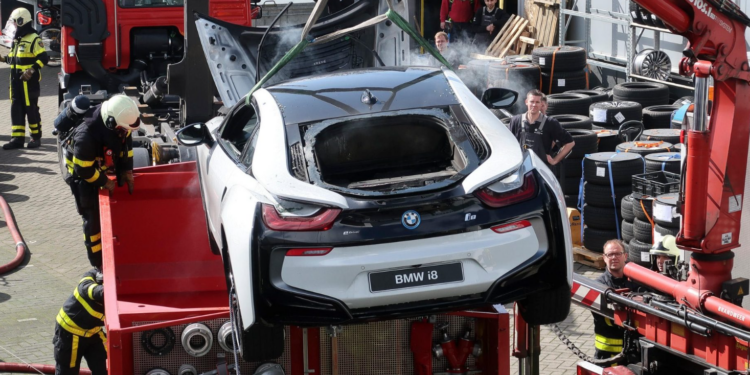Car park spaces should become wider and burning electric cars dunked in baths of water, under proposed Government guidelines to prevent battery fires spreading out of control. The Telegraph has more.
Ministers have been told that battery-powered vehicles pose a medley of risks in indoor car parks, which could render 1960s-era fire safety laws dangerously out of date.
Areas of concern addressed in a Government-commissioned report included explosions of flammable vapour clouds emitted by electric vehicle batteries, as well as jets of fire and toxic water run-off from firefighting.
The report, from consultancy Arup, which makes a series of recommendations for changes to fire safety rules, said that there was a “high degree of uncertainty” about data on the fire risks of electric cars and that it is “not yet understood” whether their batteries become more of a fire hazard with age.
The consultancy has previously advised the Government on a number of infrastructure issues, including how to replace lost fuel duty revenues from electric vehicles with toll roads and higher income tax.
Solutions presented in the report included increased space between parked cars as well as greater distance between indoor car parks to manage the risk of fire spreading between cars and buildings.
It said indoor and multi-story car parks should adopt larger parking bays to help firefighters reach burning vehicles, with one example in the report proposing a 90cm to 1.2 metre gap between vehicles.
It comes as residents of a Labour-run council in London fight to block plans to build an electric bus garage under a development of thousands of new flats amid fears battery fires could cause a “volcano”.
Fires in indoor car parks can cause widespread damage to other vehicles. The Luton Airport car park blaze, though not said to be caused by an electric vehicle, is estimated to have destroyed up to 1,500 cars.
The report, published in July, goes on to detail how water used to put out burning electric cars is contaminated by toxic chemicals in lithium-ion batteries and can pose a “significant ecological impact” in some areas.
It suggested that in these locations that water used to tackle blazes would need to be contained and treated at a plant before being released into sewage.
On top of this, it warned that around 13% of electric vehicle fires reignite, sometimes hours later and multiple times, adding the fires were harder to extinguish than those of petrol or diesel cars.

Not mentioned is that larger car park spaces will inevitably mean higher parking charges – yet more costs piled onto the beleaguered motorist.
Worth reading in full.












To join in with the discussion please make a donation to The Daily Sceptic.
Profanity and abuse will be removed and may lead to a permanent ban.